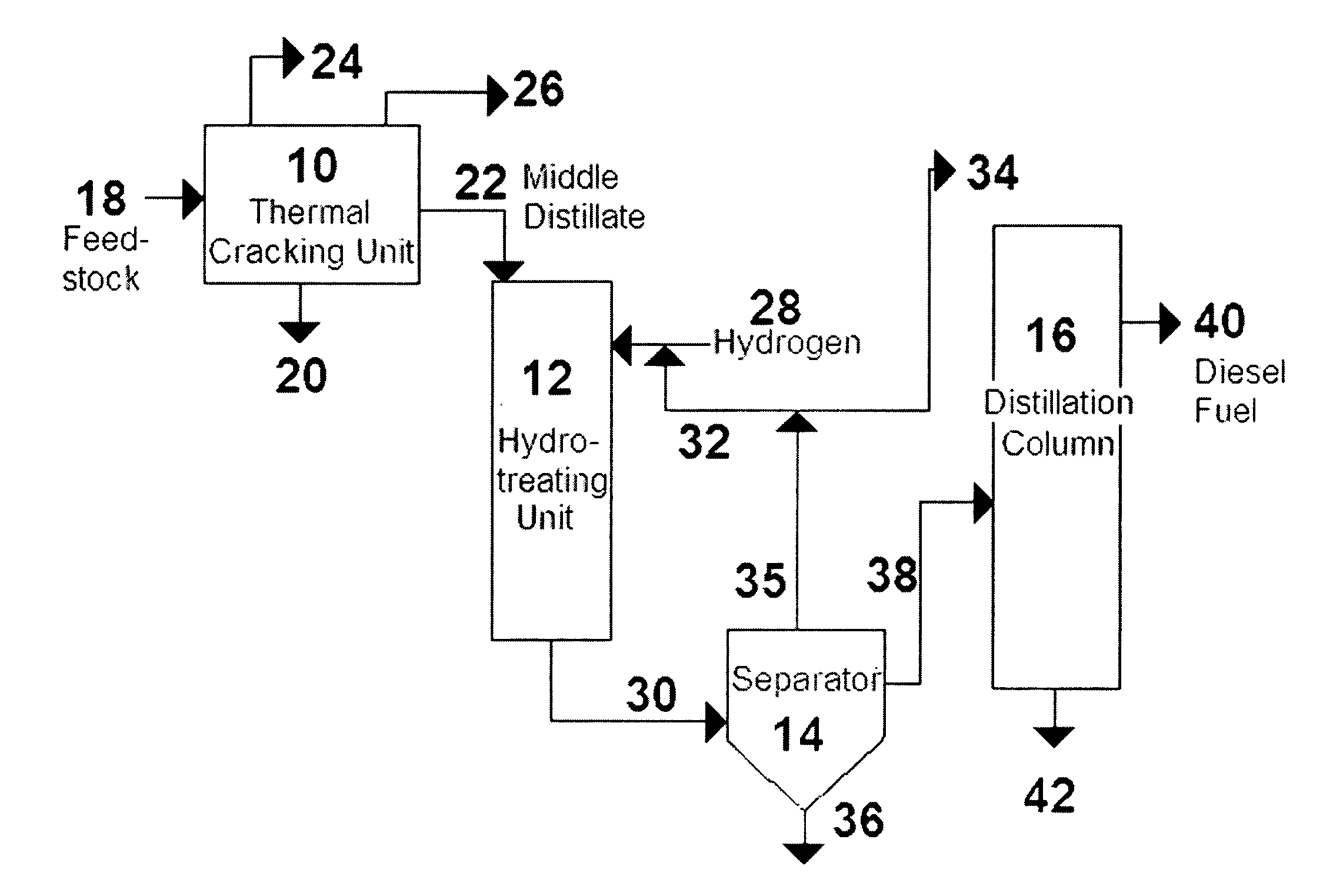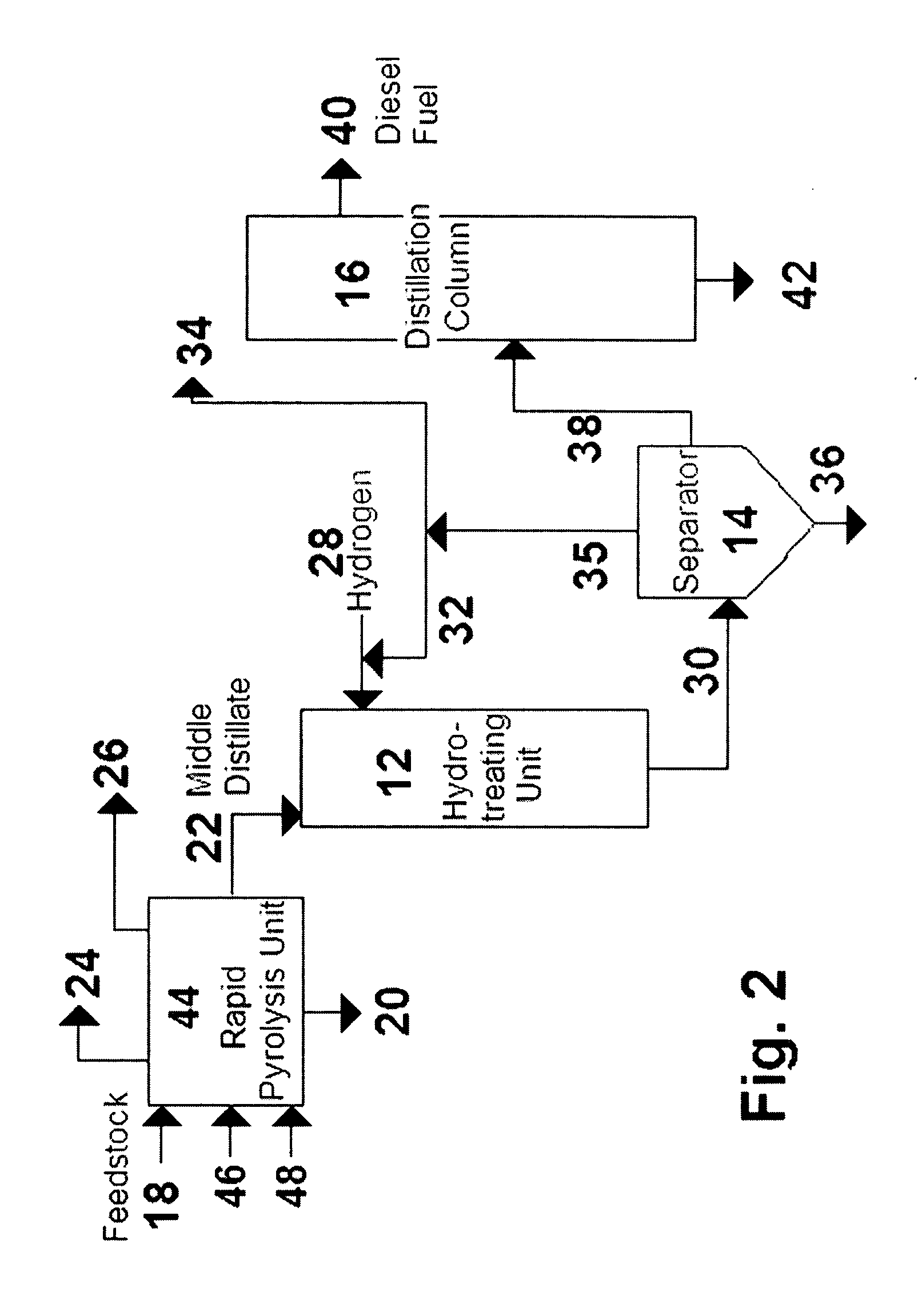Production of high-cetane diesel fuel from low-quality biomass-derived feedstocks
a technology of biomass-derived feedstocks and high-cetane diesel, which is applied in the direction of biofuels, fuels, hydrocarbon oil treatment products, etc., can solve the problems of difficult conversion of low-quality feedstocks, large hydrogen requirements, and high operating costs, and achieves high cetane valu
- Summary
- Abstract
- Description
- Claims
- Application Information
AI Technical Summary
Benefits of technology
Problems solved by technology
Method used
Image
Examples
example 1
Conversion of Restaurant Trap Grease into Biomass-Derived Diesel
[0050] Restaurant trap grease having an average density of 0.925 g / mL, and an oxygen content of 13.72 wt % was fed to a thermal cracking unit where it was cracked at a temperature of 418.5° C. and a pressure of 300 kPa for 40 minutes. Thermal cracking produced a gas stream, a naphtha stream, a middle distillate stream having a boiling point in the range of from 165 to 345° C., water and residue. The middle distillates stream made up 63.0 wt % of the total cracked product and its oxygen content was only 7.99 wt %.
[0051] The middle distillate stream was then fed to a catalytic hydrotreating unit. Hydrotreating produced a biomass-derived diesel fuel having a cetane value of 75.4, a pour point of −6.0° C. and a cloud point of −2.5° C. The diesel was found to have less than 10 ppm sulphur content, which is well within tolerable commercial limits.
example 2
Conversion of Yellow Grease into Biomass-Derived Diesel
[0052] Yellow grease is waste grease resulting for rendering of animal fat. In this case, yellow grease, having a density of 0.918 g / mL and an oxygen content of 11.56 wt. % was fed to a thermal cracking unit in which it was cracked at 411° C. and 100 kPa for 40 minutes. Thermal cracking produced a product containing 68.6 wt % middle distillates (165° C.-345° C.), 7.0 wt % naphtha and the remainder gas, water and residues.
[0053] The middle distillate stream, which was found to have 8.29 wt % oxygen, was then fed to a catalytic hydrotreating unit. The resultant biomass-derived diesel stream had a cetane value of 79.2, a pour point of −4.0° C. and a cloud point of −1.4° C. The sulphur content of the diesel was found to be less than 10 ppm.
PUM
| Property | Measurement | Unit |
|---|---|---|
| boiling point | aaaaa | aaaaa |
| temperature | aaaaa | aaaaa |
| temperature | aaaaa | aaaaa |
Abstract
Description
Claims
Application Information
 Login to View More
Login to View More - R&D
- Intellectual Property
- Life Sciences
- Materials
- Tech Scout
- Unparalleled Data Quality
- Higher Quality Content
- 60% Fewer Hallucinations
Browse by: Latest US Patents, China's latest patents, Technical Efficacy Thesaurus, Application Domain, Technology Topic, Popular Technical Reports.
© 2025 PatSnap. All rights reserved.Legal|Privacy policy|Modern Slavery Act Transparency Statement|Sitemap|About US| Contact US: help@patsnap.com



